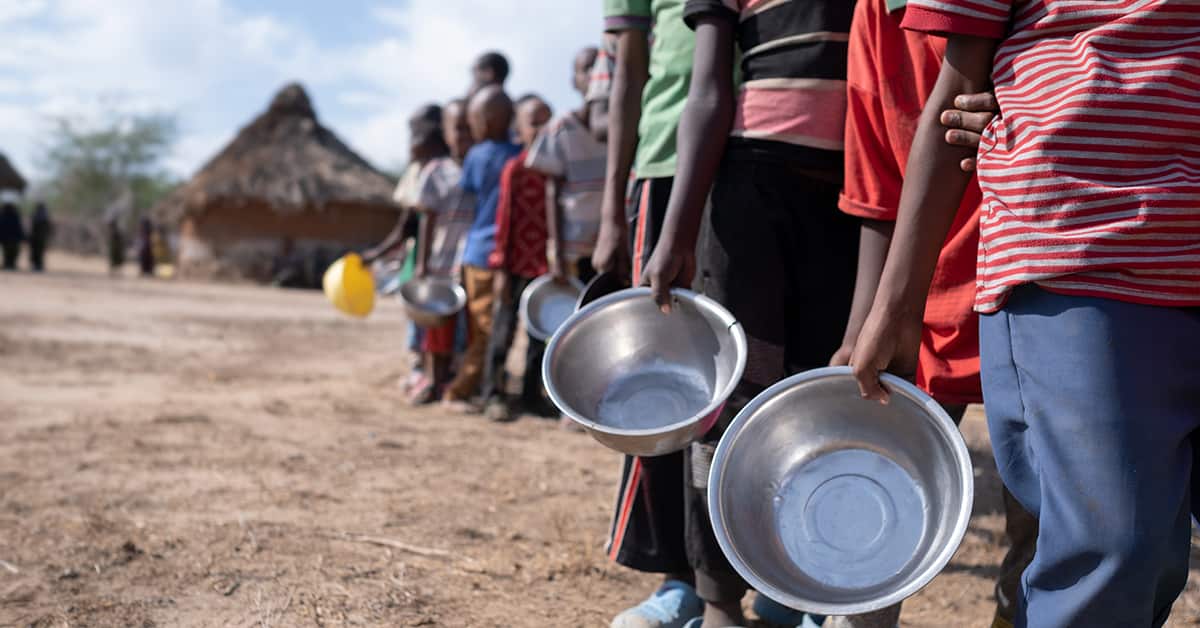Lack of agricultural investments by African nations leads to a bitter harvest.

A food crisis is not a new phenomenon in Africa. For decades it has primarily been an internally inflicted problem due to failure to prioritize the agricultural sector, rising populations, conflicts and natural calamities. This year, however, the Russian invasion of Ukraine has brought a new dimension to the crisis. It has badly exposed the depth of the problem by bringing out the risks associated with depending on imports not only of food but also inputs like fertilizer and fertilizer ingredients.
Across sub-Saharan Africa, countries like Egypt, Morocco, Kenya, Malawi and South Africa import over 90% of fertilizer and wheat from Russia and Ukraine. United Nations Conference on Trade and Development data show that 32% of African wheat imports come from Russia and 12% from Ukraine. Throughout the continent, 25 countries import more than a third of their wheat from the two Eastern Europe nations.
Since the conflict broke out in late February, governments have been under pressure to contain a food crisis threatening to spiral out of control.
“Africa must acknowledge the dire situation and take responsibility instead of denying or blaming external factors to justify the fact that food insecurity has been multiplied by four times during the past four years,” says Mamadou Diop, Action Against Hunger West and Central Africa Regional Representative.
There is no doubt the situation is dire. The United Nations estimates that 346 million people on the continent face severe food insecurity. Essentially, a quarter of the population does not have enough to eat. The situation is severe in the Horn of Africa, Sahel and West Africa regions, where about 80 million people face acute hunger and millions of children under five are acutely malnourished.
A Growing Problem
Africa spends a staggering $43 billion on food imports annually. Out of this, $15 billion goes to grains, edible oils and sugar alone. The disruption of food and fertilizer supply chains by the Russian invasion is thus having catastrophic ripple effects on economies and threatening peace.
In most African countries, food-induced inflation has skyrocketed to unprecedented rates, some only witnessed over a decade ago during the global financial crisis. This has pushed up the costs of living and ignited street protests in countries like Ghana, Tunisia and Uganda, while others like South Africa and Zimbabwe remain on edge. Ghana, for instance, a country that has never witnessed an unprecedented food crisis, has seen inflation skyrocket to an all-time high of 31.7% in July. The government is desperately negotiating with the International Monetary Fund for a $3 billion bailout, the second in three years.
In sub-Saharan Africa, consumers spend at least 40% of their income on food compared with about 10% in Western Europe and less than 10% in North America. With poverty and unemployment on the rise, fears of economic upheavals are spreading across the continent as more people find it hard to put food on the table.
“The high dependence on imports combined with rising prices globally is straining the already depleted forex reserves in many African countries and has put pressure on domestic productivity,” observes Chris Mitchell, Boston Consulting Group Nairobi office Managing Director and Partner. He adds that Africa must learn from the Russian-Ukraine conflict to rethink food systems.
Notably, lack of commitment to the agricultural sector has been an overrunning trend in Africa. Two decades ago, Africa crafted the Comprehensive Africa Agriculture Development Programme framework as part of the Agenda 2063 continental initiative. In the framework, 43 countries pledged to spend at least 10% of total public expenditure on agriculture. Today, agricultural spending remains at less than 3% of total budgets across the continent.
“Government must put access to food at the heart of public policies by guaranteeing adequate public budget for supporting and promoting sustainable food systems,” explains Diop. This is critical considering that more than 60% of the sub-Saharan African population is smallholder farmers, while about a quarter of the gross domestic product comes from agriculture.
Having failed to prioritize agriculture in the past, today, the continent faces a herculean task in unleashing the sector’s potential and tackling the perennial problem of food insecurity. A 2019 report by McKinsey showed that sub-Saharan Africa would need eight times more fertilizer, six times more improved seed, at least $8 billion of investment in basic storage and as much as $65 billion in irrigation to fulfill its agricultural promise.
“Governments will need to prioritize investments tailored to the specific needs within a region and for specific crops they grow,” avers Mitchell. To ensure sustainability, the investments will require the incorporation and support of private sector actors. Moreover, scarcity of public finances means the continent must find innovative ways to de-risk agriculture and mobilize private capital.



